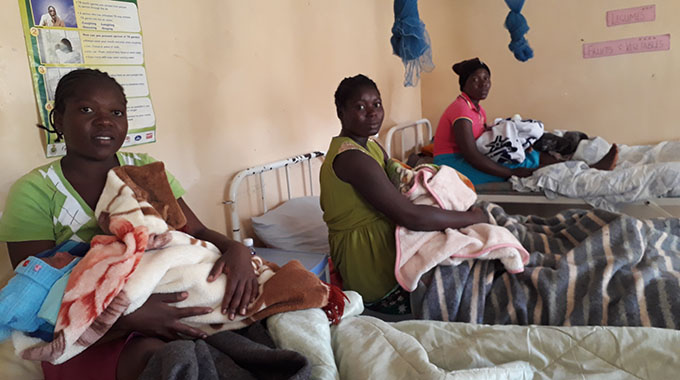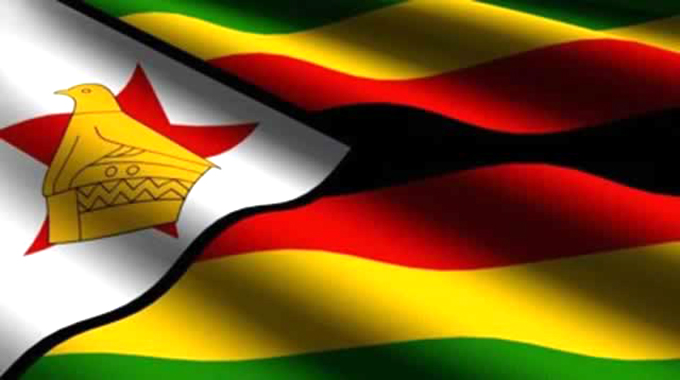Giving life in a disaster: A mum-to-be’s nightmare

Roselyne Sachiti Features Editor
Whenever floods cause destruction, they ruthlessly unsettle livelihoods and impact significantly on the health of pregnant women and their unborn babies.
Additionally, during natural disasters like Cyclone Idai, health care facilities and providers like clinics, hospitals that remained standing become overloaded. This makes prenatal care and delivery a mammoth task given the lack of necessary equipment for emergencies especially in smaller clinics.
In most cases, pregnancy complications such as placenta accreta and placenta previa, obstructed labour, retained placenta, and fetal distress usually stalk pregnant women affected by floods.
It is a chilling reality that pregnancy complications and childbirth in unsafe conditions increase maternal and infant morbidity and mortality.
When Cyclone Idai hit Zimbabwe in March, pregnant women especially those with first pregnancies and those who had complications in previous ones, had one more headache.
While they initially worried about shelter, food and clothing, the thought of what would happen to their unborn babies nagged them.
First referral health institutions like Mutambara Mission Hospital, Chipinge and Mutare Provincial Hospitals were cut off as sections of the road network and bridges in the epicentre of the cyclone collapsed.
This meant that both mother and child were at risk of losing their lives should any complication have arisen during childbirth.
One pregnant woman affected by the floods had severe pelvis injury, the other a spinal injury, another a miscarriage, which put them and their unborn babies at greater ris1k. They needed emergency assistance at a time their community had lost a war with nature.
Others had a history of post-partum haemorrhaging with previous deliveries and were required to give birth at a referral hospital to attend to complications in a timeously.
Complications during pregnancy and childbirth are leading causes of death and disability among women of reproductive age (15-49 years) in Zimbabwe.
To avert deaths, Government with assistance from the United Nations Population Fund (UNFPA) has been airlifting expecting mothers affected by Cyclone Idai to referral hospitals that include Chipinge and Mutambara.
Here, the mothers stay in mothers waiting shelters from where they are also given food through the World Food Programme as they wait to deliver. Good nutrition during pregnancy is important to the mother and the unborn baby’s growth and development.
Mothers waiting shelters at hospitals have numerous benefits for women. In the shelters, mothers can wait so that, when they go into labour or develop antenatal complications, they can transfer to the hospital wards for management and safe delivery.
While UNFPA was already providing technical and financial support to the Government through the Ministry of Health and Child Care (MoHCC) towards the reduction of maternal and neonatal mortality, Cylone Idai presented an unexpected new challenge which needed urgent attention.
Given that maternal mortality in Zimbabwe currently stands at 614 deaths per 100 000 live births — one of the highest maternal mortality rates worldwide — ensuring that affected pregnant women had a safe delivery became a priority.
At Chimanimani Clinic, 281 pregnancies are expected in 2019 while expected births stand at 225. Even though they have a mothers’ waiting shelter, they have referred five women with high risk pregnancies to Chipinge and two to Mutambara.
Airlifting high-risk pregnant women affected by Cyclone Idai to bigger and more equipped health institutions is important as they receive emergency interventions when needed.
One woman airlifted to Mutambara Hospital is eight- month pregnant Maria Mlambo of Kopa area. Kopa is one of the worst affected areas in Chimanimani, which is still cut off.
She had registered the pregnancy at their local clinic and was eager to go to the mothers’ waiting shelter at Chipinge Provincial Hospital since she had complications with all her other four pregnancies.
When Cyclone Idai came, she lost everything — her home, food and the unborn baby’s clothes. Their community was cut off as roads and bridges were destroyed.
Just like many others affected by the floods, she was also initially trying to survive the disaster by finding food, water and shelter.
She was stuck in Kopa until when she was airlifted to Chipinge Provincial Hospital.
Angeline Simango (19) of Dzingire village in Kopa, Chimanimani, who is nine months pregnant lost everything in the floods.
Since it is her first pregnancy which is regarded as high risk. She is also housed at Chipinge mothers’ waiting shelter awaiting delivery. To get there, she first boarded a lorry carrying bananas and then a bus.
“I panicked and thought the helicopter would get here late and my delivery date is nearing. That is why I ended up not waiting for the helicopter. I was scared of giving birth at home. I have been told why it is important to give birth in a health facility,” she said.
Elizabeth Maonde (32) of Chikukwa Village, Chief Chikukwa area, was also airlifted to Mutambara Mission Hospital. She only managed to leave her falling house with one set of baby clothes. Everything else was washed away.
At Mutambara Mission Hospital, four fulltime monitors observe the women staying in the shelter round the clock. The shelter also has a resting room with a television set and couch. In the resting room a few steps from the mothers waiting shelter is a standby delivery bed for emergencies.
Then there was six months pregnant Stella Dirikwe (19) of New Stands in Ngangu, who was asleep when disaster struck. Desperate to save her unborn child and self, she jumped to what she thought was safety through a small window injuring her left leg in the process. Outside she was almost swept by the aggressive tide.
All the clothes she bought in preparation of her unborn baby were swept by the water.
Today she is housed at Chimanimani Hotel and waiting to go to a mothers waiting shelter when her delivery date approaches.
Looking for donated baby clothes distributed at Chimanimani High School is like searching for a needle in a haystack. When the clothes come, they are not sorted into categories that include baby, young children, adult, male or female. She has to quickly pick from a pile and give others a chance. Sometimes she only picks adult clothes which she cannot dress her baby in once she gives birth. It is difficult to switch the adult clothes for baby clothing with other cyclone victims as needs differ.
The airlifted pregnant women and others affected by Cyclone Idai are also beneficiaries of the Mama Kit, a set of baby clothing items provided UNFPA being distributed by Musasa Project.
In the kit are 10 nappies, two vests, a towel, a baby blanket and a bag. These can give pregnant women affected by Cyclone Idai somewhere to start. At Chimanimani High School, 380 Mama Kits were ready for distribution with more coming.
More pregnant women have been given the Mama Kits through the Musasa and UNFPA safe spaces at Chipinge Provincial Hospital where the bulk of pregnant women were airlifted to.
UNFPA Country Representative for Zimbabwe Dr Esther Muia said airlifting pregnant women affected by Cyclone Idai was critical.
“Pregnancy is a normal physiological process. They should be able to deliver normally if they did not have any previous complications. However, out of every 100 women who go into labour at least 15 of them may develop some kind of complication that will affect them or the baby that is to be born. It is for this reason that we said it could be difficult to get the 15 percent. Therefore, anyone who is 37 weeks and above should be taken to the nearest health facility where they can get assisted delivery at birth. Should a complication arise an emergency intervention can be exercised.”
She said a criterion for picking out pregnant women who were more vulnerable and getting them out of the marooned areas was used.
“With the roads cut off, it would not have been possible for them to reach quick care because obstetric emergencies require intervention 15 to 20 minutes to save both the mother and baby. For this reason, it was not all women who were 37 weeks, it is women who were 37 weeks and above. Also women who may not be 37 weeks but had previous Caesarean sections are not likely to deliver alone. Those who are young and it’s the first pregnancy. Young and first pregnancy means those less than 21 and are having their first pregnancy. Their pelvis may not be ready enough, so the probability of having obstructed labour is much higher,” she pointed out.
Dr Muia said Mama Kits were vital especially to the women affected by Cyclone Idai.
“When women are pregnant, they usually start to slowly collect clothing for the unborn baby. Therefore, over the nine-month period they put the little they have to ensure they are better prepared to receive the baby. The sudden loss means they cannot be able to replace what they have been collecting. That is why we decided to give them a start-up kit for the baby. It is not comprehensive but at least it is better than nothing and takes away the worry of how they will leave the hospital with a naked baby,” she said.
Government has also shown its commitment to maternal and newborn health by recently making a humanitarian appeal with special focus on maternal, newborn and child health, prevention of epidemic-prone diseases, continuation of chronic care, supply of medicines and sundries, monitoring and surveillance estimated at US$5,1 million Under the Tropical Cyclone Idai International Humanitarian Assistance Appeal.
[email protected]. Twitter @RoselyneSachiti










Comments